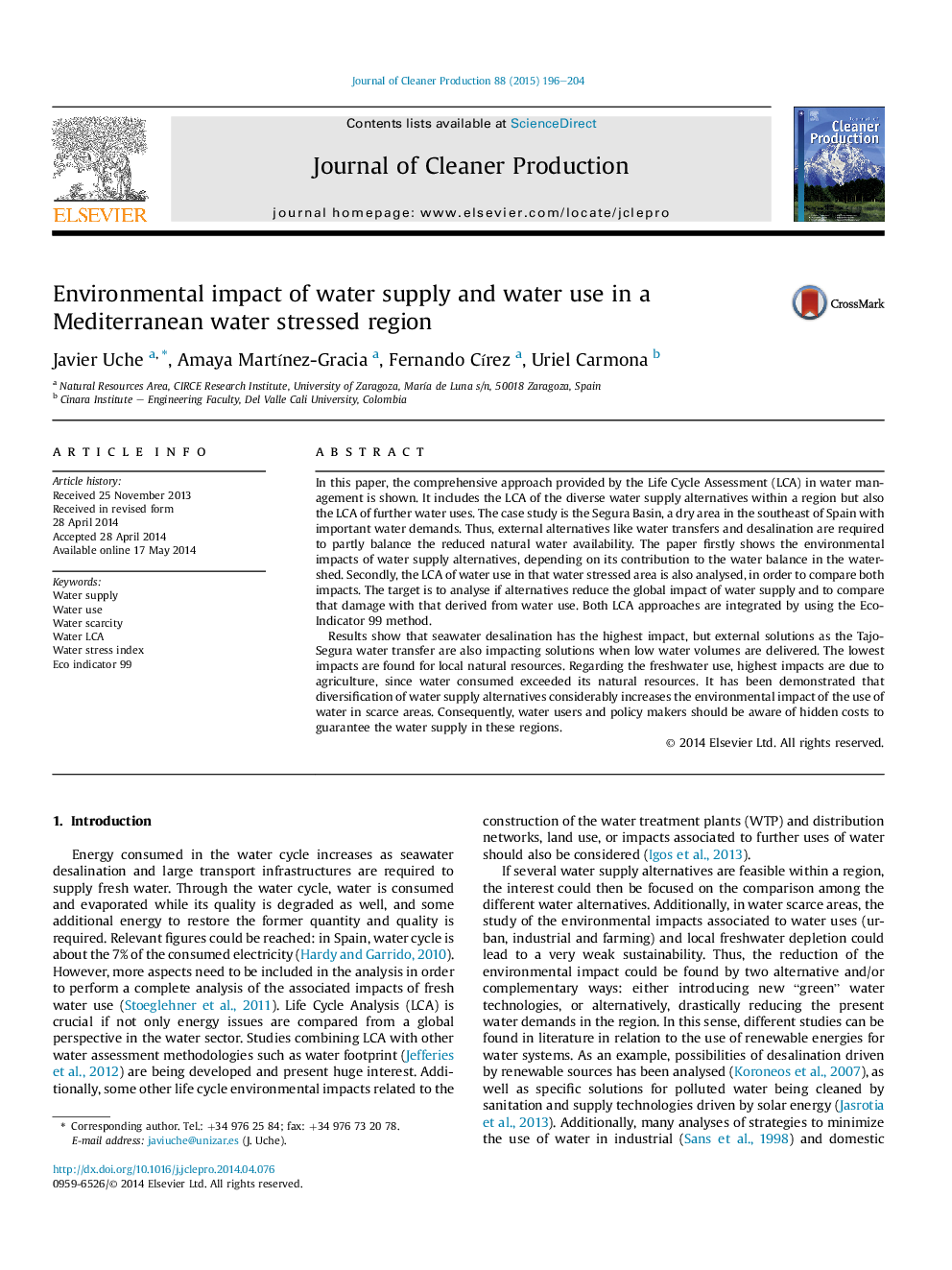| Article ID | Journal | Published Year | Pages | File Type |
|---|---|---|---|---|
| 1744770 | Journal of Cleaner Production | 2015 | 9 Pages |
In this paper, the comprehensive approach provided by the Life Cycle Assessment (LCA) in water management is shown. It includes the LCA of the diverse water supply alternatives within a region but also the LCA of further water uses. The case study is the Segura Basin, a dry area in the southeast of Spain with important water demands. Thus, external alternatives like water transfers and desalination are required to partly balance the reduced natural water availability. The paper firstly shows the environmental impacts of water supply alternatives, depending on its contribution to the water balance in the watershed. Secondly, the LCA of water use in that water stressed area is also analysed, in order to compare both impacts. The target is to analyse if alternatives reduce the global impact of water supply and to compare that damage with that derived from water use. Both LCA approaches are integrated by using the Eco-Indicator 99 method.Results show that seawater desalination has the highest impact, but external solutions as the Tajo-Segura water transfer are also impacting solutions when low water volumes are delivered. The lowest impacts are found for local natural resources. Regarding the freshwater use, highest impacts are due to agriculture, since water consumed exceeded its natural resources. It has been demonstrated that diversification of water supply alternatives considerably increases the environmental impact of the use of water in scarce areas. Consequently, water users and policy makers should be aware of hidden costs to guarantee the water supply in these regions.
